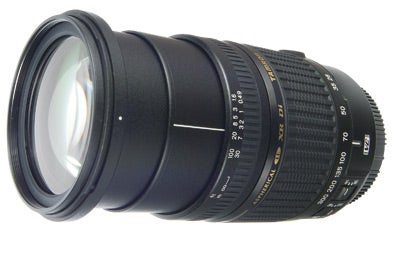Tamron AF 28-300mm f/3.5-6.3 XR DI VC LD Aspherical (IF) Macro Review
Tamron AF 28-300mm f/3.5-6.3 XR DI VC LD Aspherical (IF) Macro Review
If you need a lens with a really wide focal range, this one looks like it might fit the bill...

Verdict
Pros
- Size, VC control, convenience
Cons
- Average sharpness, some fringing
Key Specifications
- Review Price: £499
Tamron’s first lens with built in image stabilisation is this 28-300mm Di lens, suitable for both full-frame and APS-C sensors. The lens incorporates a new mechanism, known as Vibration Compensation (VC) which uses ‘a triaxial configuration of three driving coils and slide balls around the compensator group of the lens’s optical system. Since the compensator lenses are supported with rolling friction of the balls, the response performance is enhanced and the construction is simple, which results in the compactness of the lens.’ On top of that, the lens features a highly accurate gyro sensor for detecting camera shake and a 32-bit RISC CPU, to allow comfortable anti-vibration effects.
In use, the power of the VC is quite remarkable – a half press of the shutter kills most viewfinder-visible camera shake dead, an effect we’ve seen on other IS lenses, but not so satisfyingly obvious. Any 28-300mm or similar lens is literally stretching the laws of optical physics and compensatory technology needs to be included to achieve the desired focal lengths, while maintaining a compact size. In Tamron’s case the combination of low dispersion, high refraction, anomalous dispersion and aspherical elements help achieve the objective, without sacrificing too much quality. All these are achieved using a mixture of glass-moulded and hybrid elements. And of course, being designed for digital, a special blend of multiple lens coatings prevent ghosting and flare caused by internal reflections from the lens and sensor have been used.
The fact that 1:3 Macro focusing down to 49cm throughout the focal range is also available is impressive, though true Macro is 1:1, so perhaps close-up focusing would be a more accurate term. The lens design is more rugged than a budget lens, with a decent weight and feel and comfortable rubber grips. The barrels are plastic though, so won’t withstand the rigours required of a professional lens. A pair of slider switches are easily accessible to your left thumb, for quick changing of the AF/MF modes and to activate the VC function.
Image Quality
In terms of sharpness the lens doesn’t quite match up to the recent 18-250mm, but it’s not too far off, especially at the wide end. The chart also shows a peak at f/8 at 28mm, which is also borne out in the field test. At 300mm the the chart is flatter, though f/8 remains a marginally better aperture to use for best results. Chromatic aberration is pretty consistent throughout, with very good central control at 28mm, and a 1 to 2 pixel rise on average, and considering the focal stretch this is a reasonable performance. As for the VC, there is a definite bonus to having it, and it allows at least two stops slower shutter speeds to be used.
Verdict
Considering the stretch of the zoom, the Tamron 28-300mm puts in a satisfactory optical performance. It may not be as good as a shorter-ranged zoom, but compromises are always accepted for convenience. Where the lens scores is its use of the VC control, and Tamron’s first foray into this expanding market can be safely said to be successful.
Trusted Score
Score in detail
-
Value 9
-
Design 9
-
Image Quality 9
-
Features 9

